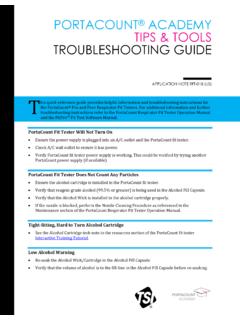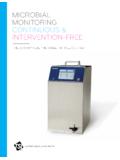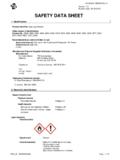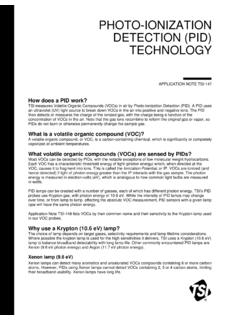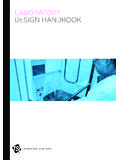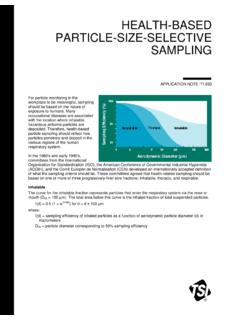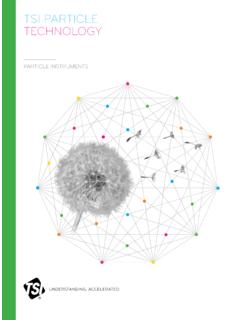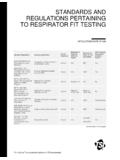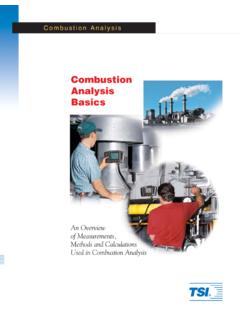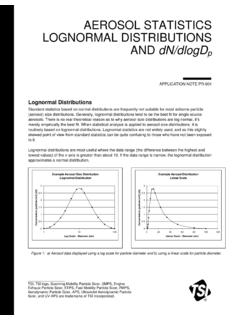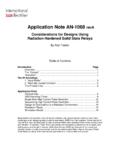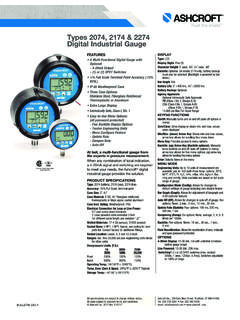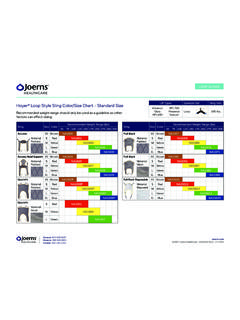Transcription of HIGHLY ACCURATE, REAL-TIME NANOPARTICLE …
1 Applications: The Model 3938 is used for a wide variety of applications, a few of which are listed below.+ Nanotechnology research and materials synthesis+ Atmospheric studies + Environmental monitoring+ Combustion and engine exhaust studies+ Indoor air quality measurements+ Nucleation/condensation studies+ Inhalation toxicology studiesFeatures and Benefits+ High resolution data: up to 192 channels+ Broad size range: from 1 nm to 1,000 nm+ ISO 15900:2009 compliant+ Fast measurements: <10 second scans+ Wide concentration range up 107 particles/cm3+ Component design for maximum flexibility+ Touch screen control with no computer needed for operation + Easy setup with tool-less installation and auto discovery of components+ Discreet particle measurement: works well for multi-mode samples+ Independent of optical properties of the particles and fluid+ Wide range of system options: choice of water or butanol CPC; choice of traditional or non-radioactive neutralizer.
2 Long, Nano or 1 nm DMAUNDERSTANDING, ACCELERATEDSCANNING MOBILITY PARTICLE SIZER SPECTROMETER (SMPS )MODEL 3938 TSI s SMPS spectrometer is widely used as the standard for measuring airborne particle size distributions. This system is also routinely used to make accurate NANOPARTICLE size measurements of particles suspended in liquids. The National Institute of Standards and Technology (NIST) uses a TSI DMA to size 60 nm and 100 nm standard size reference materials. SMPS spectrometer sizing is a discrete technique in which number concentrations are measured directly without assuming the shape of the particle size distribution.
3 The method is independent of the refractive index of the particle or fluid, and has a high degree of absolute sizing accuracy and measurement repeatability. TSI s Model 3938 is the 3rd generation of SMPS; trusted by researchers for over 30 ACCURATE, REAL-TIME NANOPARTICLE SIZING SYSTEMS YOU CAN RELY ON FOR YEARSX-Rayon/offDMAE xcessFilterFilterFlowmeterHigh VoltagePower SupplyTouchscreenDisplaySheathPumpSheath MonodisperseAerosol OutHeat ExchangerPolydisperseAerosol InInlet ImpactorNeutralizer PTRHPPROVEN TECHNOLOGY FORHIGHLY RESOLVED PARTICLE SIZING32 Differential Mobility AnalysisTSI s Scanning Mobility Particle Sizer Spectrometer (SMPS)
4 Measures the size distribution and concentration of particles in the size range of 1 nm to 1 m using differential mobility analysis. This method is based on the physical principle that the ability of a particle to traverse an electric field (electrical mobility) is fundamentally related to particle size no size calibration is necessary (first principle measurement). In a Differential Mobility Analyzer (DMA), an electric field is created and the airborne particles drift in the DMA according to their electrical mobility. Particle size is then calculated from the mobility distribution.
5 This method is independent of the particle zeta limitations of surface techniques include low sample sizes (non-representative), image edge definition problems, 3D to 2D image distortion, and operator bias. Rigorous peer reviewed uncertainty analyses have been performed indicating TSI s DMA has a sizing uncertainty of approximately <2%. The technology used in the SMPS Spectrometer is protected by US Patents 4,790,650 and 5,118,9593A BROAD RANGE OF OPTIONS TO MEET YOUR MEASUREMENT NEEDSD ifferential Mobility Analyzers (DMAs) +Long Differential Mobility Analyzer Model 3081A: This classic DMA has been relied upon by aerosol researchers for over 40 years.
6 Data from the DMA Model 3081A is well known to be precise, repeatable, and comparable to results measured by the luminaries in the field of aerosol science. +Nano Differential Mobility Analyzer Model 3085A: Improves size resolution over the particle size range of 150 nm and NDMA also features increased NANOPARTICLE transmission efficiency through the DMA. +1nm Differential Mobility Analyzer Model 3086: Expands high resolution measurements down to 1 nm. Optimized for minimal diffusion losses and improved resolution over the size range of 1-50 nm. Aerosol NeutralizersTSI also offers a choice in aerosol neutralization.
7 All of the options feature bipolar diffusion charging to bring the aerosol to a steady-state charge distribution. +The traditional Kr85 neutralizers have been used in the industry for decades. (Model 3077A) +The Advanced Aerosol Neutralizer: Provides a nonradioactive option, and features virtually identical sizing to radioactive sources when used in a sizing system with built-in power from the classifier for easy integration. (Model 3088)Software +Aerosol Instrument Manager Software: Data Collection and Data Management TSI s SMPS spectrometer includes the Aerosol Instrument Manager software, a program designed for use with Microsoft Windows operating systems, It features pull-down menus and dialogue boxes to simplify set up, operation, data collection, and analysis.
8 +Data Merge: Enables merging of SMPS and APS data files to produce a wide-range particle size distributions ( to 20 m) for analysis and fits a set of data to unimodal, bimodal or trimodal distributions functions. +Built in SMPS Functionality: The 3938 SMPS includes resident firmware to execute measurement without the need for an attached PC . Condensation Particle Counters (CPCs) +Butanol CPCs: TSI has extensive experience in the design and engineering of reliable, research quality Condensation Particle Counters (CPCs). The SMPS compatible instruments feature extended single particle counting range and on-board live-time coincidence correction for superior data accuracy for measuring particles down to nm.
9 +Water-based CPCs: TSI also offers a line of precision water-based CPCs as a VOC-free alternative to alcohol based instruments. Using a patented* laminar flow water condensation technique these instruments count particles can measure down to nm at concentrations up to 400,000 particles/cm3 using single particle counting. +Diethylene Glycol (DEG) Nano Enhancer The Nano Enhancer (NE) Model 3777 uses diethylene glycol as a working fluid to allow the growth of particles from 1 nm. Paired with the Model 3772 CPC, the 1nm CPC system can measure concentrations up to x 105 particles/cm3 (165,000) using single particle counting.
10 +For more information on CPC selection, visit and review the application note, CPC-002. SCANNING MOBILITY PARTICLE SIZER MODEL 3938 Refer to separate product sheets for descriptions and specifications of individual componentsSPECIFICATIONSTSI Incorporated - Visit our website for more Tel: +1 800 874 2811UK Tel: +44 149 4 459200 France Tel: +33 1 41 19 21 99 Germany Tel: +49 241 523030 India Tel: +91 80 67877200 China Tel: +86 10 8219 7688 Singapore Tel: +65 6595 6388 Printed in , ACCELERATEDP/N 5001531 Rev D 2015 TSI IncorporatedSMPS Settings and Requirements Data Averaging (Scans per Sample) 1 to 999, user-selectable Aerosol Flow Rate to 5 L/min, user-adjustable Sheath Flow Rate 2 to 30 L/min, user-adjustable Working Fluid n-butyl alcohol (butanol), distilled water, diethylene glycol (depends on cpc)
